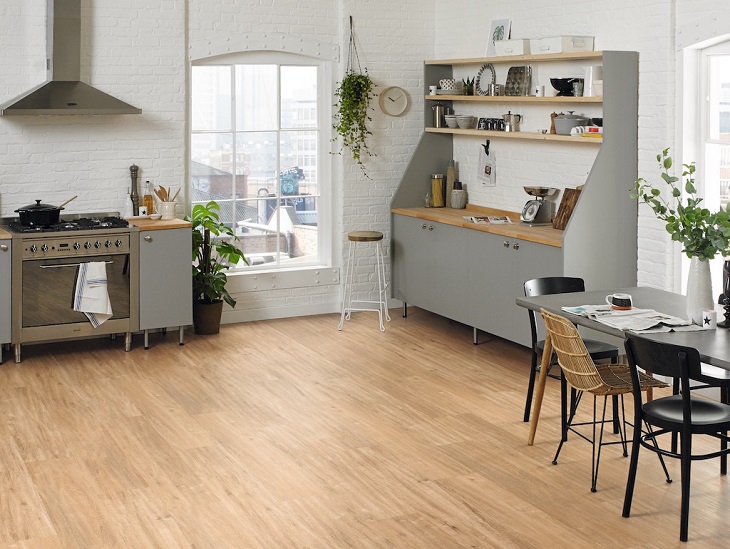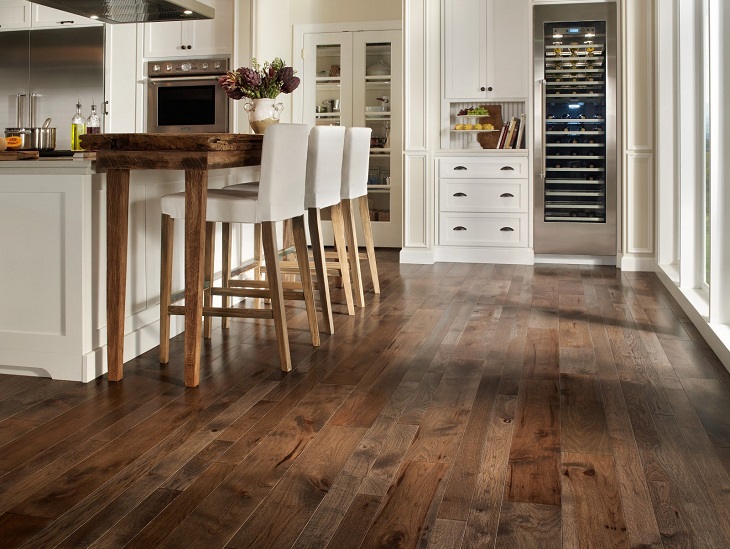The flooring is the foundation on which the rest of your home’s design rests and therefore, needs to look polished and beautiful at all times. However, flooring also undergoes a lot of wear and tear from constantly being stepped on, and nowhere is this more evident than in the kitchen.
Kitchen floors take quite the beating for being the workstation for cooking and the space that every family member steps on throughout the day, in other words, it is the most frequently used area in the house. For that reason, anyone renovating a kitchen and looking for the perfect flooring solution should consider the two best options – laminate and hardwood. Both laminate and hardwood floors have their strengths and weaknesses, and this guide is designed to help you make up your mind.
The Case for Laminate Flooring

Being the more affordable option of the two, this does not mean laminate looks cheap. When properly manufactured, longboard laminate can realistically imitate the look of hardwood at a fraction of its price. If you’re not a fan of wooden-looking floors, don’t worry – a lot of manufacturers nowadays have designed laminate boards with different looks such as stone, ceramic tiles and more.
Concerning functionality and durability, laminate is perhaps the best flooring choice for kitchens. It consists of three or four protective layers joined together by the process of lamination. Due to its multiple layers, laminate can withstand a lot of foot traffic, which is a really important feature to look for in a flooring solution.
Another important requirement that kitchen floors should meet is to be resistant to humidity and spills. Let’s be clear, there’s no true water-resistant flooring. However, laminate is something that comes close to it. This is especially true for longboard laminate which due to its size, it reduces the amount of cracks through which water can get in and inflate the boards. Spills from drinks and splashes from cooking and dish washing are a common occurrence in kitchens and can significantly damage the floor. However, laminate is a material that does not soak in fluids and all you need to do is quickly wipe it with a mop to dry it up. When cleaning laminate, there’s no need to treat it with any chemical cleaners as these can be quite dangerous in an environment where food is being kept.
The Case for Hardwood Flooring

Even though there are much more affordable options on the market, hardwood still remains among the top choices for kitchen floors. This is due to two factors: its classic timeless look and its durability.
This type of floor best compliments kitchens with rustic and traditional designs. Its look and feel brings richness and depth to a place and creates a warm dining atmosphere. However, unlike laminate, which does not soak in any stains, wood is very much prone to staining. If you are not careful, hardwood can accumulate a lot of stains over the years which will result in it looking discoloured and dirty.
After stone, wood is the second toughest material for floors. In a room with high frequency, such as the kitchen, hardwood will show no signs of damage even after dozens of years. However, it can absorb humidity from the air which after a while can cause it to warp (http://www.popularwoodworking.com/article/why-wood-warps). Moreover, you need to be extremely careful because if any water or fluid gets in this kind of flooring, the boards could begin to rise. As far as cleaning is concerned, wood also does not require much maintenance besides regularly polishing it to keep its smooth look.


















